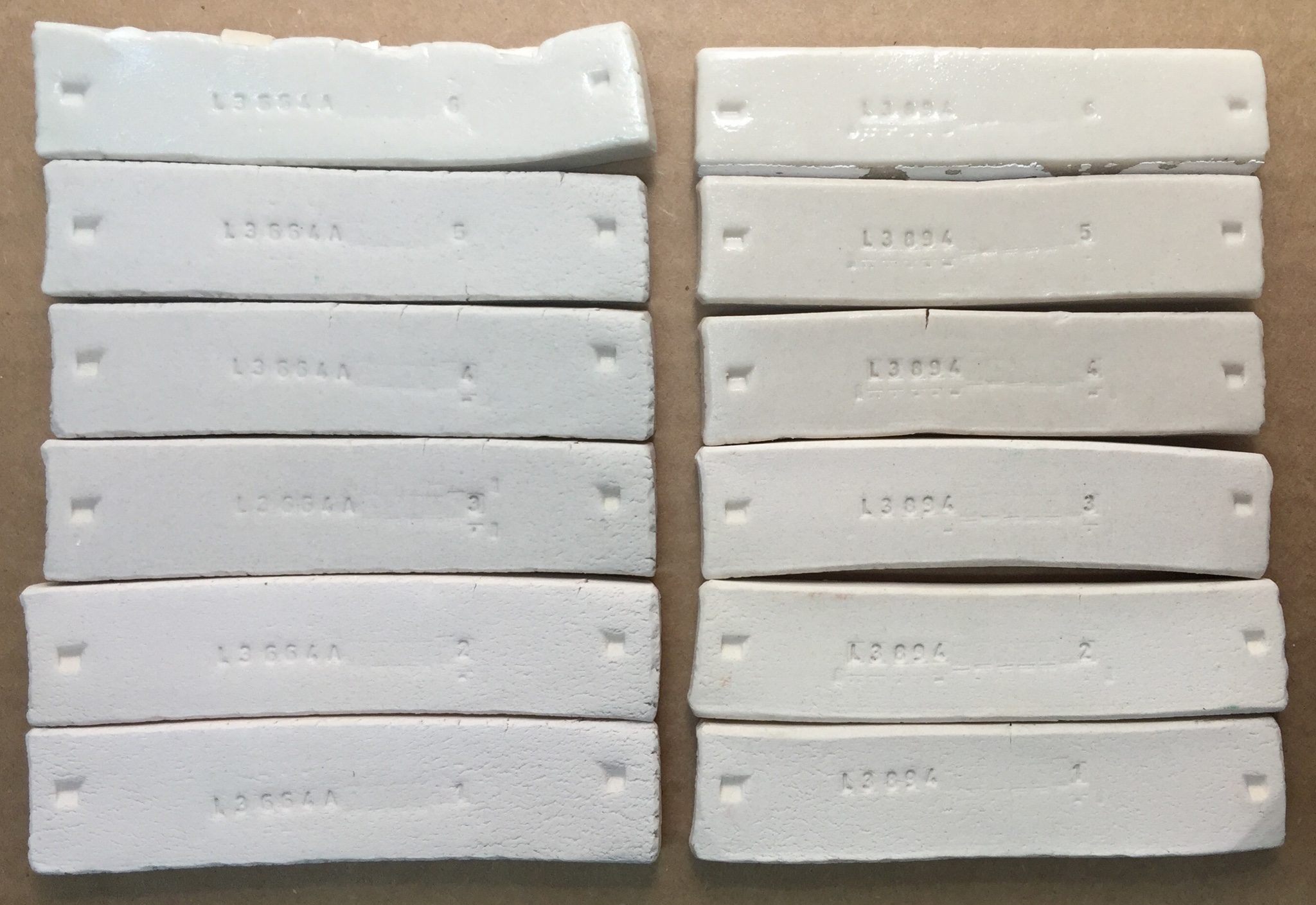| Monthly Tech-Tip | No tracking! No ads! | |
Fired bars of PV Clay and a substitute fired at six temperatures
On the left is a 2013 shipment of PV Clay. These fired test bars are from cone 10R and 5 oxidation down to 1. This is PV theoretically as it used to be, a plastic feldspar. It is melting at cone 10R and reaches almost zero porosity at cone 4 (by cone 3 it has 4.5% and by cone 2 it has 11.5%). Fired shrinkage is 10% by cone 4, dropping to 6% by cone 2. Dry shrinkage is about 5%. The substitute blend on the right, L3894, is 38% silica, 44% Custer feldspar, 12% Pioneer kaolin, 3.5% bentonite and 2.5% dolomite (it calculates to a very similar chemistry). And these fired bars exhibit shrinkage and densities very similar to the PV Clay at every temperature. However, the drying shrinkage is about 1% lower and the fired color is darker (we later changed the recipe to use #6 Tile kaolin to add plasticity and Nepheline Syenite to make it whiter-burning). Of course, one could adjust this recipe further to suit (e.g. reduce its maturity by reducing the feldspar, reduce its plasticity by cutting the bentonite).
Videos
Links
| Materials |
PV Clay
|
Got a Question?
Buy me a coffee and we can talk

https://digitalfire.com, All Rights Reserved
Privacy Policy

